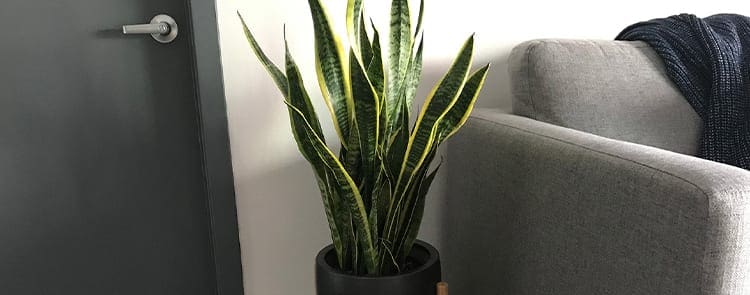Blogs
Air Care Tips for Heating and Cooling
3/18/2016

Truth: Your heating and cooling system is complicated and can be difficult to work with if you aren’t a professional. This doesn’t excuse the fact that there are things you should be aware of and actively maintaining throughout the year. Hot or cold, many things in both your furnace and air conditioner require similar maintenance and observation throughout the year. So to keep your house at its best, let’s take a quick look at the top 5 Air Care Tips.
1. Change the Filter
We simply cannot overstate how important this is. Change your filter every 3 to 6 months. So many problems with indoor air quality, allergies, and system wear and tear are caused by filters that haven’t been replaced all year. It doesn’t matter if you’re working with a furnace, heat pump, or air conditioner, change your filter to get the best efficiency and cleanest air. Dirty dusty air is always a safety and health hazard.
You have plenty of options to choose from when selecting a filter, and actually replacing your air filter is one of the easiest maintenance actions you can perform. Make a note, write it into your calendar, or set a reminder on your phone and change out the air filter regularly.
2. Use a Timer
It’s unlikely that there is someone at your home all the time and, even if there is, you probably don’t need constant temperature regulation throughout the day. Using a timer or installing a smart thermostat to control when your central heater or air conditioner will turn on will save you a bundle on electric and fuel bills throughout the year.
There’s no reason for your home to be regulating the temperature while everyone is gone to work during the day. Sure it’s nice to return to a warm or cool house after work, but a smart thermostat can be set to start adjusting the temperature in time for your arrival without needing to keep the temperature comfortable all day long.
3. Reduce Work Load
What will really save you money? A long-lasting, efficient central air unit. One that doesn’t need to be repaired regularly and doesn’t cost a small fortune to regulate the temperature in your home. The funny thing is, by reducing how hard your system has to work to regulate temperature, you can effectively prolong its life and reduce how much you spend on utility bills every month.
The most obvious technique is to lower the thermostat during the winter (although, you can also raise it a little in the summer for a similar effect. But this isn’t your only choice. The strain is reduced on your temperature regulator when it doesn’t run as long or as often as it might normally. Improvements in insulation, properly sealed ducts, and shaded windows are all effective measures against heat loss in the winter and make for effective heat shields in the summer.
4. Clear the Area
Clear out junk, heat traps, and airflow blockers from your heating and cooling unit. This means that you need to make sure that there isn’t anything flammable near your furnace. That furnace gets incredibly hot while it’s running, and dry cardboard, papers, and fabrics are all a fire risk if they’re too close.
On the other hand, you need to be sure that the area around your air conditioner’s condenser unit is always kept clear as well. The condenser operates on airflow, with a fan drawing cooler air over the heated condenser fins. If brush, trash, or other materials are in the way, air cannot be pulled over the fins to cool it, impeding your unit’s ability to cool your home (this is also why an iced-over air conditioner cannot cool your home).
5. Improve Airflow
For forced air climate control systems (which most heating and cooling systems for modern homes are), the most important thing is regulating airflow. When your system was installed, it was designed to heat or cool your home. The power of your system should have been sized to match how large the rooms are and how far the air needs to move through the ducts to reach the individual rooms.
Closing off rooms and vents can actually impede airflow for your system by generating back pressure that your blower fan has to fight against. Back pressure can force open seals, leading to heating or cooling losses in the ventilation ducting. Open doors and leave all of your vents open to keep maximal airflow for the highest efficiency of your unit.
515-657-6634Request Appointment Online
Return- January 2024
- October 2023
- September 2023
- August 2023
- January 2023
- December 2022
- November 2022
- October 2022
- September 2022
- August 2022
- July 2022
- June 2022
- May 2022
- April 2022
- March 2022
- February 2022
- January 2022
- May 2021
- November 2020
- October 2020
- September 2020
- July 2020
- June 2020
- May 2020
- March 2020
- February 2020
- December 2019
- November 2019
- September 2019
- May 2019
- April 2019
- January 2019
- December 2018
- November 2018
- October 2018
- July 2018
- October 2016
- September 2016
- August 2016
- July 2016
- June 2016
- May 2016
- April 2016
- March 2016
- February 2016
- January 2016
- December 2015
- November 2015
- October 2015
- September 2015
- August 2015
- July 2015
- June 2015
- May 2015
- April 2015
- March 2015
- February 2015
- January 2015
- December 2014
- November 2014
- October 2014
- September 2014
- August 2014
- July 2014
- May 2014
- March 2014
- February 2014
- January 2014
- December 2013
- November 2013
- October 2013
- September 2013